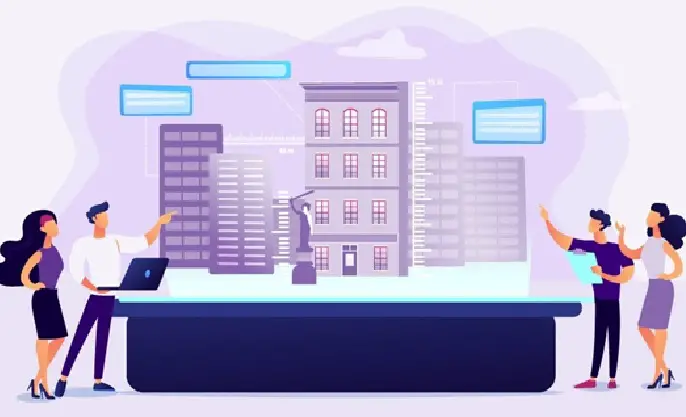 Urban planning has become an integral subject in today’s digital age. Urbanization is growing unprecedentedly, as are the cities and the number of people in them. Urban planning is a multidisciplinary subject that addresses many components, such as land use, transportation, infrastructure, environmental sustainability, and social equity.
Urban planning has become an integral subject in today’s digital age. Urbanization is growing unprecedentedly, as are the cities and the number of people in them. Urban planning is a multidisciplinary subject that addresses many components, such as land use, transportation, infrastructure, environmental sustainability, and social equity.
As urban planning revolves around the cities and the people in them, communication with customers and customer service has become increasingly important with the complexity of urban environments and the demand for sustainable and inclusive cities.
So, in this article, we will cover how customer service in the urban planning sector is revolutionized and the roles of voice and video communication technology. Let’s get started.
What is Urban Planning Sector?

Urban planning is designing, developing, and managing various city sectors, including land use, public transportation, infrastructures, sustainability, and social equity. This multidisciplinary subject involves various subjects and sciences, including civil engineering, architecture, geography, political science, environmental studies, and design sciences.
Moreover, urban planners strive to create livable, functional, and vibrant cities that cater to citizens’ needs and aspirations.
In short, urban planning concentrates on the physical transformation, economic activities, function, and various social impacts of the urban environment and the location of activities within it.
Now that we have covered urban planning let’s move into revolutionizing customer service in the urban planning sector and the role of voice and video communication technology.
I. Benefits of Voice and videos communication Technology in Urban planning customer Services

Voice and video communication technology offer numerous benefits in improving customer services within the urban planning sector. Here are some of the most important advantages:
A. Enhanced Engagement
Urban planners may communicate with clients through more involved and engaging voice and video channels. For instance, real-time discussions enable residents to immediately voice their issues, ask questions, and offer comments through video conferences and other digital communication.
As a result, the link between urban planners and the community is strengthened by this active engagement, which promotes a sense of inclusiveness.
B. Increased Accessibility
Clients can more easily engage in urban planning processes with voice and video communication technology regardless of location. A greater range of views and issues can be addressed and represented since residents can participate in conversations, attend public meetings, or offer their opinions online.
This accessibility supports inclusiveness and democratic processes.
C. Cost and Time Savings
Voice and video communication technology eliminate the need for in-person meetings and site inspections, saving time and money for both clients and urban planners. Virtual gatherings and conferences reduce travel costs and offer more scheduling flexibility.
Additionally, it makes it possible for urban planners to interact with more clients at once, expediting the entire customer service procedure.
D. Expanded Public Outreach
Voice and video communication technology give urban planners efficient resources for educating and engaging the public. Planners may educate a larger audience on urban planning initiatives, policies, and projects through webinars, online tutorials, or educational videos.
This proactive and unified communication promotes public awareness, stimulates active engagement, and keeps communities informed.
II. Implementation and integration of voice and video communication Technology

Implementation and integration of voice and video communication technology in urban planning customer services requires careful planning and consideration. Here are some key steps to facilitate a successful implementation:
A. Identify Communication Needs
Assess the business communication requirements of the urban planning industry first. Determine where voice and video communication might improve customer services, like public involvement, gathering feedback, or answering inquiries. Find out who the target audience is and what channels they like to use for communication.
B. Select Appropriate Technology
Analyze various providers to determine which voice and video communication technologies best meet the demands and objectives that have been established. Consider elements like cost-effectiveness, scalability, ease of use, compatibility with current infrastructure, and security features.
Platforms for internet protocol, video conferencing, VoIP (voice over internet protocol) services, and voice communication apps are among the common choices. Apps like Microsoft Teams are ideal for features like real-time communication and room-based video.
C. Establish Technical Infrastructure
Ensure the technical foundation required to support voice and video communication is in place. It includes having dependable internet connectivity, the right technology (such as PCs, cellphones, or video conferencing tools), and enough bandwidth to handle audio and video data.
Work with IT departments or service providers to build and optimize the necessary infrastructure.
D. Train Staff and Educate Customers
Ensure the staff and employees receive thorough training on voice and video communication technologies. Inform them of the most effective methods for enabling engaging discussions, running virtual meetings, and answering client questions. Additionally, educate clients on accessing and using the communication channels with training and support.
E. Develop Communication Guidelines
Establish clear policies and procedures for using voice and video communication in customer support. Set guidelines for acceptable staff conduct, response times, privacy protection, and customer data security. Describe the steps in scheduling virtual meetings, responding to client questions, and doing virtual site visits.
F. Integrate with Existing Processes
Adapt current customer service procedures to incorporate voice and video communication easily. Include these technologies in any online services, web pages, or mobile programs used to interact with customers. Create user-friendly interfaces that let users easily communicate with urban planners and retrieve pertinent data.
G. Monitor and Evaluate
Keep a close eye on how voice and video communication and voice technology is used in urban planning and customer services. Gather opinions from both employees and clients to pinpoint areas that need improvement. Analyze data on customer satisfaction, response times, and engagement levels to assess the effect of these technologies on customer service outcomes.
H. Improve and Adapt
Based on feedback and the findings of evaluations, adapt and improve the use of voice and video communication technologies continuously. Address technical problems, improve training initiatives, and revise communication standards as necessary. Keep up with emerging technologies to ensure continuous innovation and improvement.
III. Challenges and Considerations in utilizing voice and video communication technology

Using voice and video communication technology in urban planning customer services has numerous benefits, but there are also some challenges to consider. The following are some key factors to keep in mind that might be some of the biggest challenges:
A. Connectivity and Infrastructure
Voice and video communication depend largely on reliable access to the internet and sufficient bandwidth to function effectively. Access to high-speed internet may be restricted in some locations, particularly isolated or poorly serviced locations.
Hence, urban planners should consider connectivity and infrastructure issues when integrating these technologies and look for ways to close the digital divide.
B. Privacy and Security
Personal and sensitive information is transmitted through voice and video communication, creating a huge threat to data safety and privacy. So, data security and privacy must be given top priority by urban planners.
Planners should protect client information and guarantee secure communication channels by implementing secure network connections, encryption techniques, and adherence to pertinent data protection laws.
C. Technical Support and Training
Staff employees and customers should receive technical support and training to enable the smooth use of voice and video communication technology. While some clients might need help configuring or debugging their devices, staff members need instruction on how to use the technology efficiently.
Addressing technical difficulties and improving user experience can be possible by providing dependable support channels and thorough training programs.
D. User Experience and Accessibility
Voice and video communication solutions should have a simple, user-friendly interface. Consider simple navigation, crystal-clear audio and video quality, and amenities for people with disabilities. Place integration first and ensure that any user can utilize the technology regardless of ability or need for assistive technology.
Moreover, AI can add a personal touch to the communication process, which makes the interaction more personalized. It can also integrate various customer relationship management.
IV. Futures trend and development
With the rapid advancement of technology, these communication means are also growing exponentially. We are witnessing many breakthroughs in recent years and might see more in the near future. So, here are some of the major future trends and developments.
A. Advancements in Virtual Reality (VR) and Augmented Reality (AR)
VR and AR technologies have the potential to completely transform urban planning as they provide immersive experiences and the visualization of potential designs. Planners can use these technologies to provide virtual walkthroughs that give clients a realistic view of planned developments.
B. Integration of Artificial Intelligence (AI)
AI-powered voice assistants and chatbots can improve customer service by promptly responding to questions, guiding customers through procedures, and automating repetitive operations. Additionally, consumer reviews and data can be analyzed by AI algorithms to produce insights for enhanced urban planning decision-making.
C. Mobile Accessibility
Mobile applications and websites designed for mobile use can be essential for audio and video communication as smartphones and other mobile devices grow. Urban planning businesses can create user-friendly mobile apps that let users access information, participate in online meetings, and conveniently give input while on the go.
D. Multi-channel Communication
Organizations involved in urban planning can keep broadening their communication options to accommodate a variety of customer preferences.
This may involve integrating voice and video communication technology with social media networks, instant messaging services, video meetings, video conferencing systems, and other developing digital channels to promote efficient and inclusive consumer involvement.
Multi-channel communication has been commonly used in other businesses, like calls and contact centers, offering better customer connections.
E. Enhanced Data Analytics
Using advanced data analytics tools and approaches, urban planners can learn important lessons from voice and video communication data. Analyzing consumer interactions and feedback can reveal patterns and trends and help decision-makers make better choices.
Furthermore, it can help enhance connections with customers and clients, building strong customer relationships.
V. Conclusion
In summary, voice and video communication technology in urban planning customer services revolutionize customer service by enhancing engagement, increasing accessibility, saving costs and time, and expanding public outreach. However, challenges such as connectivity, privacy, technical support, and user experience must be considered while using these technologies.
There are many future trends, including advancements in virtual reality, integration of artificial intelligence, mobile accessibility, multi-channel communication, enhanced data analytics, and real-time data integration. So, continuous monitoring, evaluation, and adaptation are essential for harnessing the full potential of these technologies in urban planning.
Also Read: